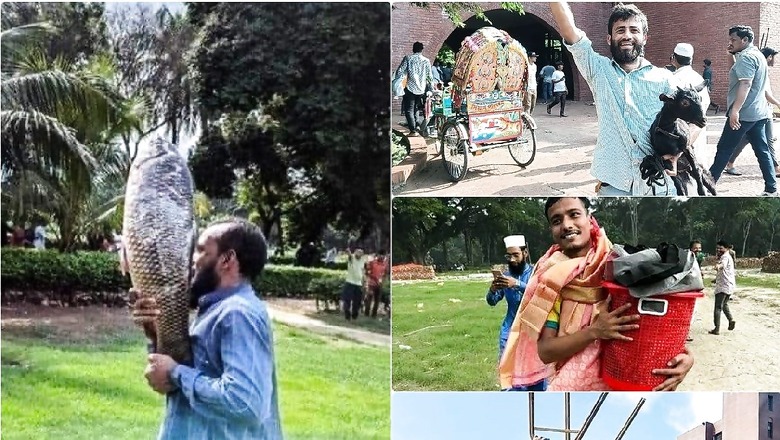
views
In a bid to control escalating protests, the Bangladesh administration had imposed a ban on several popular social media platforms, including Instagram, TikTok, WhatsApp, and YouTube. Announced on August 2, this decision was aimed to restrict access to these platforms nationwide. Reports also suggested that the internet was also suspended in the country.
However, despite such efforts, videos and images from Bangladesh continue to surface online, suggesting that citizens have found ways to circumvent the ban.
The Unrest and Response
The demonstrations against the Bangladesh government’s employment quota system, which started out as a non-violent student-led protest, have grown into a larger movement against former prime minister Sheikh Hasina and her Awami League party. The harsh measures taken by the government, which included the use of force, have killed close to 300 people and infuriated the populace.
On Sunday, officials first turned off mobile internet services in an effort to maintain control. Broadband internet service was then suspended starting late on Monday morning. However, both mobile and broadband internet connections were resumed following a brief three-hour interruption.
Protesters were unfazed by these actions and marched on the capital to demand the prime minister’s resignation, disregarding a curfew imposed by the military. The Bangladesh Army chief later announced that Hasina has resigned, and a new interim government will be formed.
Bypassing the Restrictions
Despite the government’s efforts to stifle communication by shutting down the internet and banning major social media platforms, protesters have managed to maintain their coordination. Remarkably, videos and images have surfaced on social media showing citizens invading the Ganabhaban, the official residence of the Prime Minister of Bangladesh. This raises the question as to how they managed to communicate under such restrictive conditions.
News18 has contacted Meta to determine whether their services are now operational in the country. A similar inquiry has been made to Telegram to clarify its status. At the time of writing this report, responses from both the companies were awaited.
However, it should be understood that while the use of VPNs (Virtual Private Networks) has been a well-known method for bypassing such internet censorship, other alternatives have also been employed by tech-savvy protesters.
VPNs work by routing internet traffic through a secure server in a different location, making it appear as though the user is browsing from that location. This allows access to banned platforms despite restrictions.
However, VPNs are not the only tools at the disposal of protesters. According to Tarun Wig, CEO & Co-Founder of Innefu Labs, citizens have also been using proxy servers, encrypted messaging applications, alternative platforms, and mirror sites to evade censorship. Additionally, Tor and peer-to-peer networks have been leveraged to maintain unrestricted online access. “These factors collectively underscore the inherent limitations of imposing a comprehensive information blackout in the digital age,” said Wig.
Meanwhile, Mishi Choudhary, Founder of the Software Freedom Law Centre in India, stated: “The grave situation in Bangladesh is being exacerbated by network shutdowns. This has also fueled the spread of misinformation about several issues online.”
She also highlighted that as of 2 PM Bangladesh time on August 4, a nationwide 3G and 4G network shutdown remained in effect, ordered by the authorities. “Grameenphone’s [leading telecom operator] customers were still able to use the 2G network for basic voice and SMS communication, but mobile internet services were unavailable,” she added.
According to Wig, despite the government’s attempts to control the narrative, information continues to flow freely both within Bangladesh and across international borders. The resilience of the Bangladeshi people in circumventing these restrictions highlights the challenges governments face in enforcing comprehensive internet blackouts in the digital age.
As the situation unfolds, the administration’s next steps and the protesters’ determination to push for change will be closely watched by the international community.
Catch the latest developments on Bangladesh Unrest with our live blog.

















Comments
0 comment